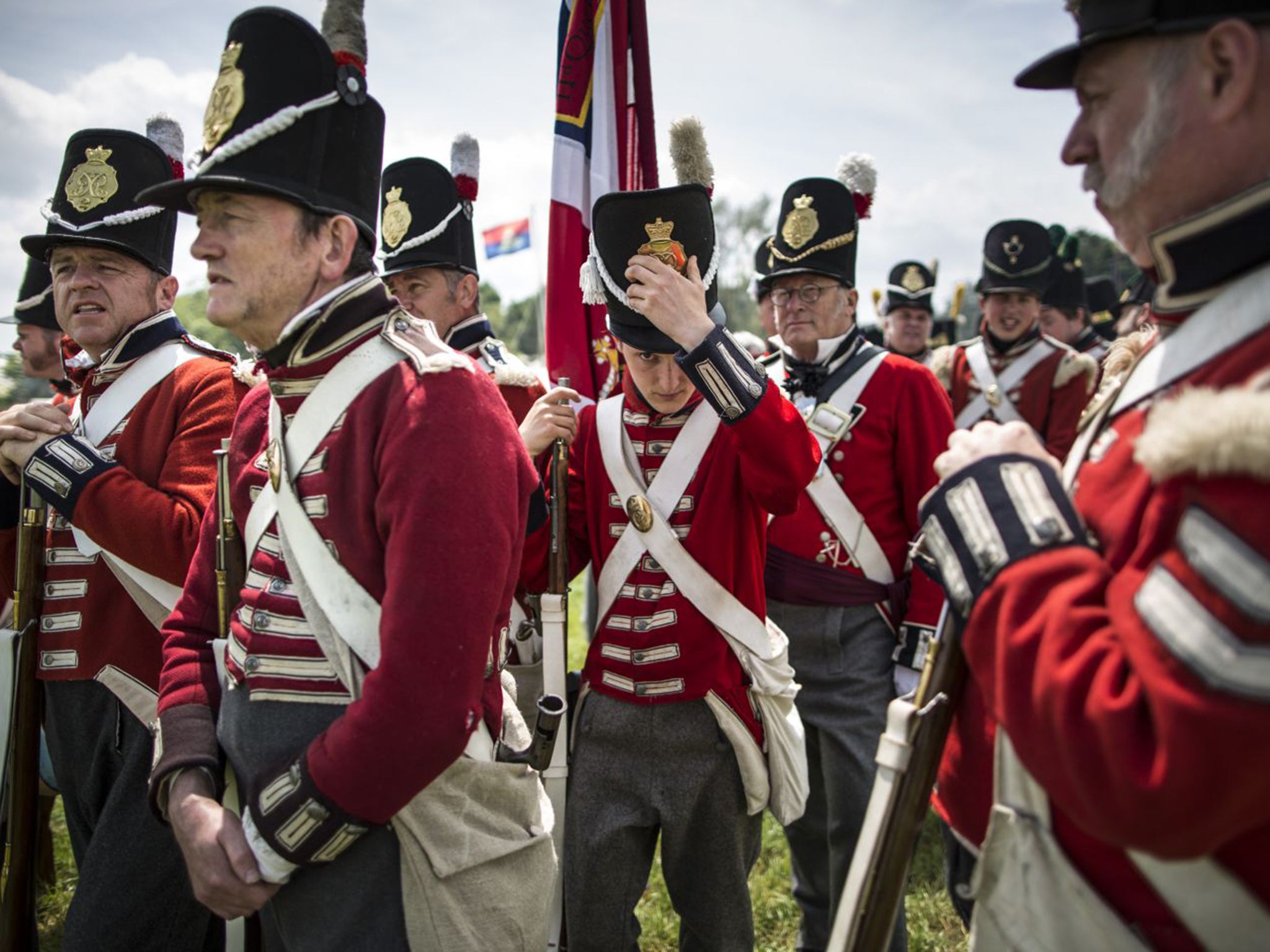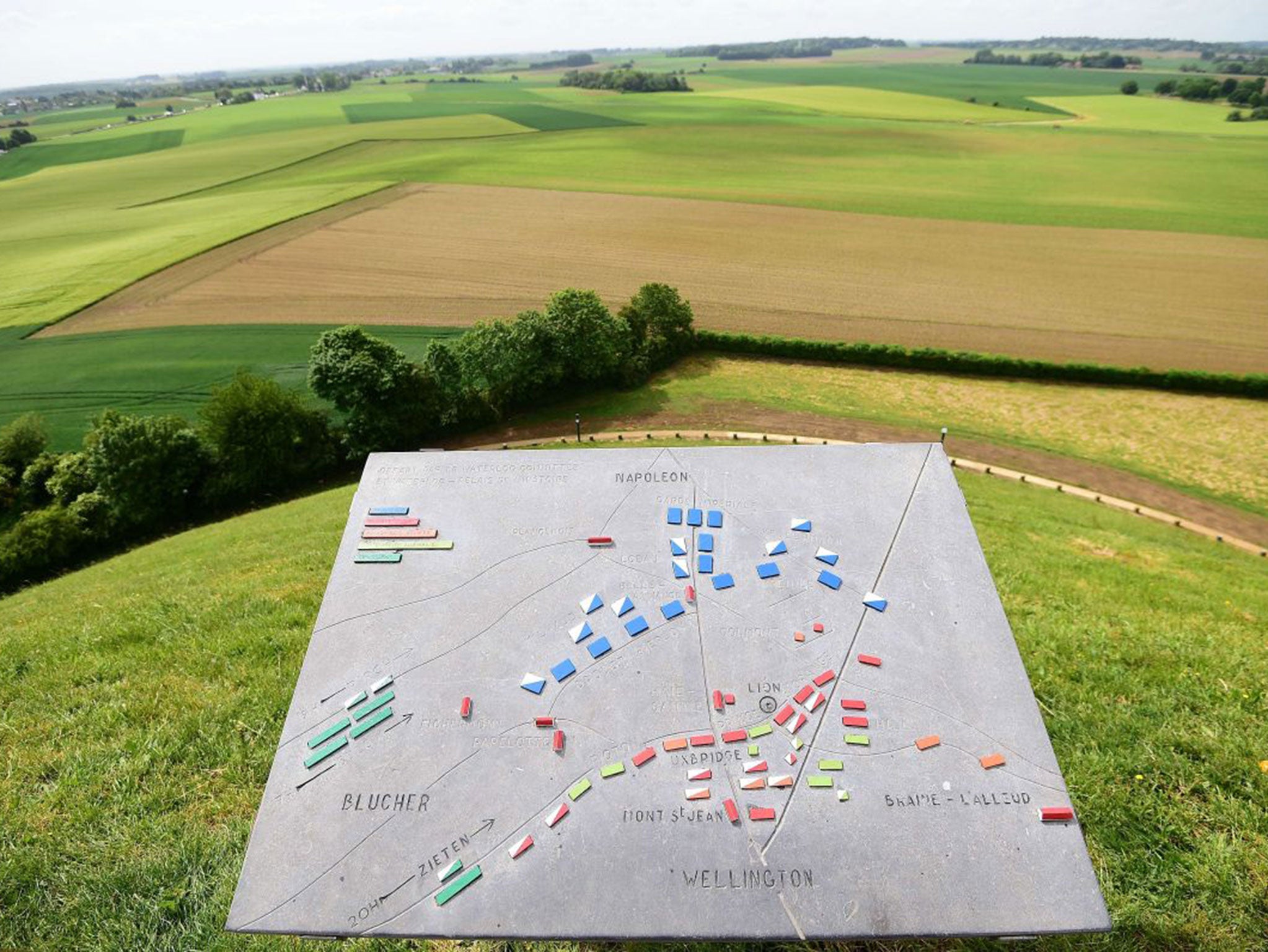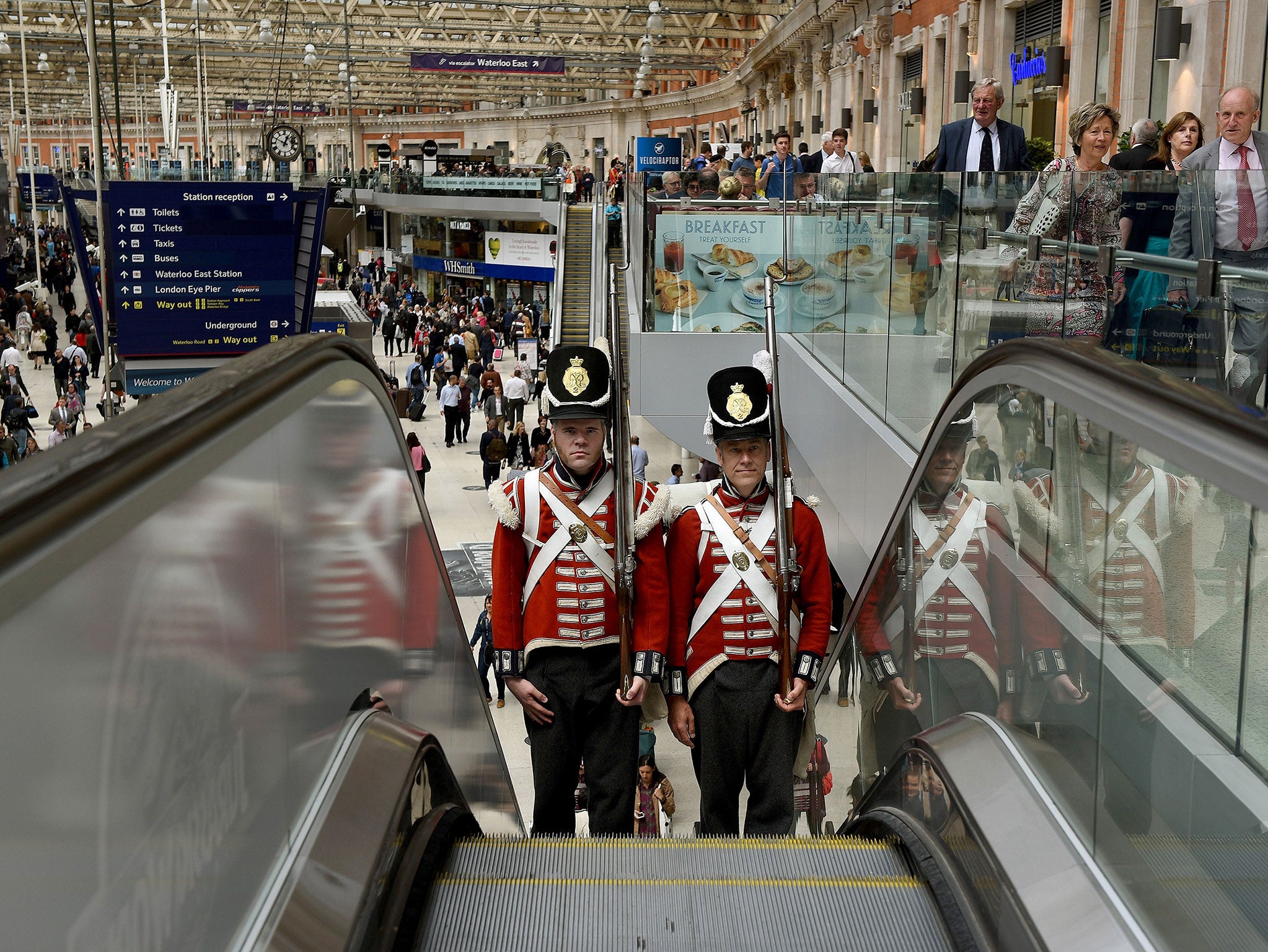The Battle of Waterloo: Joining army of re-enacters remembering one of history's most famous military turning-points
On a battlefield in Belgium, John Lichfield joins an army of re-enacters seeking to recreate one of the most famous military turning-points in history

The 200th anniversary of the Battle of Waterloo was a day for realism and a day for surrealism.
You could gaze at four Napoleonic soldiers, in plumed hats and blue uniforms, as they waited to catch a bus to Brussels with a black woman in jeans. You could stare at one of Wellington’s red-coated infantrymen as he checked his emails in the wi-fi tent at the bivouac of the allied armies. You could also marvel at the precision in which 500 “British” soldiers – some Canadian – formed into a defensive square near Hougoumont Farm.
The biggest ever re-enactment of the Battle of Waterloo will start tonight before 100,000 spectators. It will finish late on 20 June with, one presumes, the defeat of the Emperor Napoleon (aka Frank Samson, a lawyer from Paris). The event began with a representation of Waterloo in music, ballet, poetry and a thunderous son et lumière. The original battle was, in cricket terms, a one-day international. The double centenary re-enactment has grown into a three-day Test Match.

One of the more surreal sights at the pre-battle bivouac of the allied armies was a man wearing a pinstriped suit amid all the tourists in T-shirts and soldiers in bright uniforms.
He was drinking beer from a plastic cup. He looked like Nigel Farage. On closer examination, he was Nigel Farage,
What, The Independent asked, was the Ukip leader doing commemorating such a great European victory as Waterloo? It was, after all, a prototype European army which the Irish-born Duke of Wellington and the Prussian General Blucher led to victory over the French on 15 June 1815. More than half of Wellington’s force consisted of Hannoverians, Saxons, Dutch and Belgians. A third of the British soldiers were Irish. If you include the Prussians, about a quarter of the 120,000 soldiers who defeated the Emperor Napoleon at Waterloo were “British” – and maybe one in eight were English.
Mr Farage was momentarily taken aback. He counter-attacked, “Yes, we had allies,” he said. “We also had allies in World War One and World War Two. You can’t claim this as a ‘European victory’. It was the Emperor Napoleon, who was trying to create a European union, who lost the battle.”
Instead, we agreed how moving it had been to see a full British infantry square formed on the battlefield of Waterloo. This was almost certainly the largest infantry square to be formed on this spot for 200 years. There are re-enactments of Waterloo every year but on nothing like the scale of this year’s event. There will be 5,000 official “re-enactors” in the main events on the nights of 19 and 20 June.
Wellington’s infantry practised its square-forming drill close to the allied encampment at Hougoumont Farm, one of the key British strongholds 200 years ago. An impromptu commentary was provided by Robert Elliott, 59, a compliance officer in the City, and also “exploration officer”, or spy, for the 44th East Essex Regiment of Foot.
“You see how easy they make it look,” he said. “But it is actually very tricky and takes a lot of work to move from a line into a square. It was the best possible defence against cavalry. See how the front row are pointing their bayonets at an angle to keep the horses at bay while the ranks behind them fire their muskets.”
Mr Elliott was wearing a smart, dark uniform. He has been taking part in Napoleonic re-enactments for five years “for love of the history, for love of the period”.
He had paid his own way from Norfolk. Others came farther. On the Belgian bus to the site there was Francisco Perez. He was wearing a smart green Belgian militia uniform of the Napoleonic period, which he had made entirely himself.
Mr Perez, 40, is Chilean. He is a forensic architect in the Chilean police force. He had come to Europe for the first time with his wife and two children. He is enrolled as one of the official re-enactors, on Wellington’s side, on 19 and 20 June
“In Chile, when we do re-enactments, we are lucky to have 15 or 20 people,” Mr Perez said. “Here, we will be 5,000. Can you imagine? This will be a fantastic experience.”
Crossing the Brussels ring road which cuts through the battlefield, there were two French soldiers in full Napoleonic uniform. They did not speak French; nor much English. They were Russians.
A man offered to interpret. He was a French man with a Scottish wife. Waterloo is complicated, whatever Mr Farage says.

Dimitri and Andrei had come from Moscow. Napoleonic re-enactment was their “hobby”. Why were they dressed as French soldiers? “For us,” Dimitri said. “The Napoleonic army in that period represents progress and freedom. They fought against the Tsar and other monarchies.”
There were many nationalities in the Napoleonic Grande Armée, which reassembled at its own bivouac on the Waterloo battlefield: Germans, Swedes, Italians, Austrians, many French, even some Britons.
One soldier in a British infantry uniform used to fight for Napoleon. Peter Lee, 36, a local government officer from Lincoln, was once on a British-based Napoleonic regiment. He swapped sides a few years ago and joined the 33rd Regiment of Foot. He is known to his new British colleagues as “blue”.
He and his comrade Derek Roberts, 60, an electrical engineer from north Wales explained, “You are not really scared, except maybe in the bayonet charges,” said Derek. “You know that you’re not going to be killed or injured but the adrenalin runs all the same,” said Peter. What was their prediction? “We should do fine, if it goes according to history,” said Derek.
Join our commenting forum
Join thought-provoking conversations, follow other Independent readers and see their replies
Comments